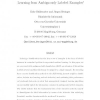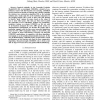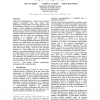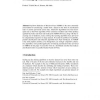96 search results - page 11 / 20 » An Evolutionary Algorithm for Oblique Decision Tree Inductio... |
IDA
2005
Springer
14 years 1 months ago
2005
Springer
Inducing a classification function from a set of examples in the form of labeled instances is a standard problem in supervised machine learning. In this paper, we are concerned w...
CEC
2010
IEEE
13 years 8 months ago
2010
IEEE
Inspired originally by the Learnable Evolution Model(LEM) [5], we investigate LEM(ID3), a hybrid of evolutionary search with ID3 decision tree learning. LEM(ID3) involves interleav...
BMCBI
2011
13 years 2 months ago
2011
Background: Remote homology detection is a hard computational problem. Most approaches have trained computational models by using either full protein sequences or multiple sequenc...
APBC
2004
13 years 9 months ago
2004
Undiscovered relationships in a data set may confound analyses, particularly those that assume data independence. Such problems occur when characters used for phylogenetic analyse...
IFIP12
2008
13 years 9 months ago
2008
Top Down Induction of Decision Trees (TDIDT) is the most commonly used method of constructing a model from a dataset in the form of classification rules to classify previously unse...




